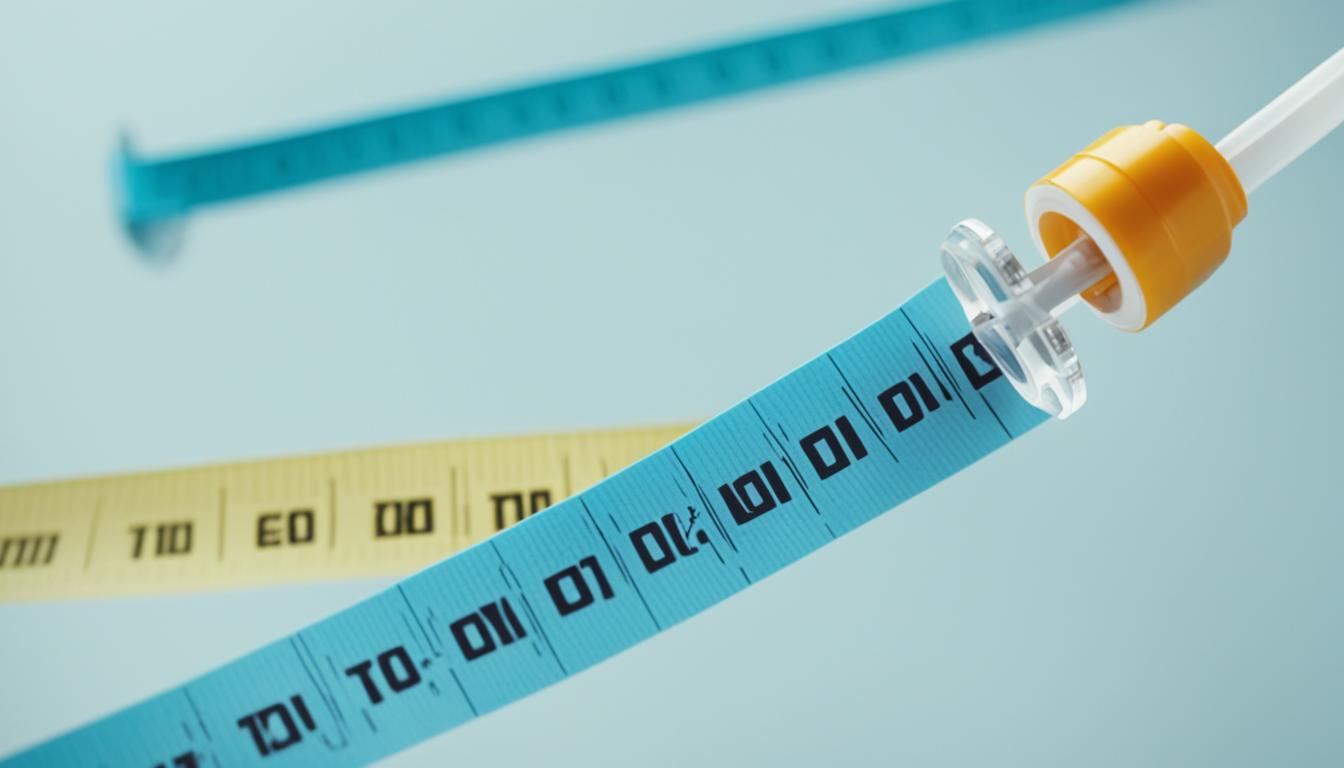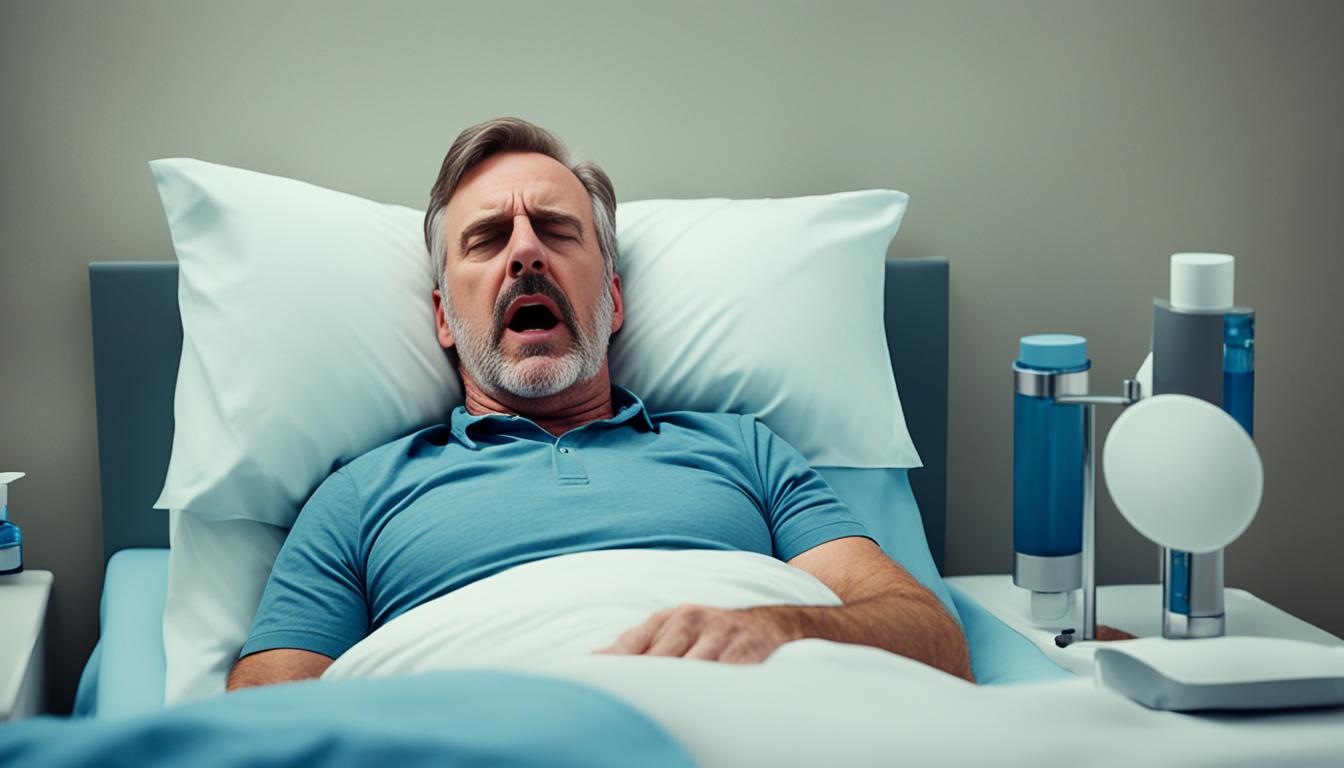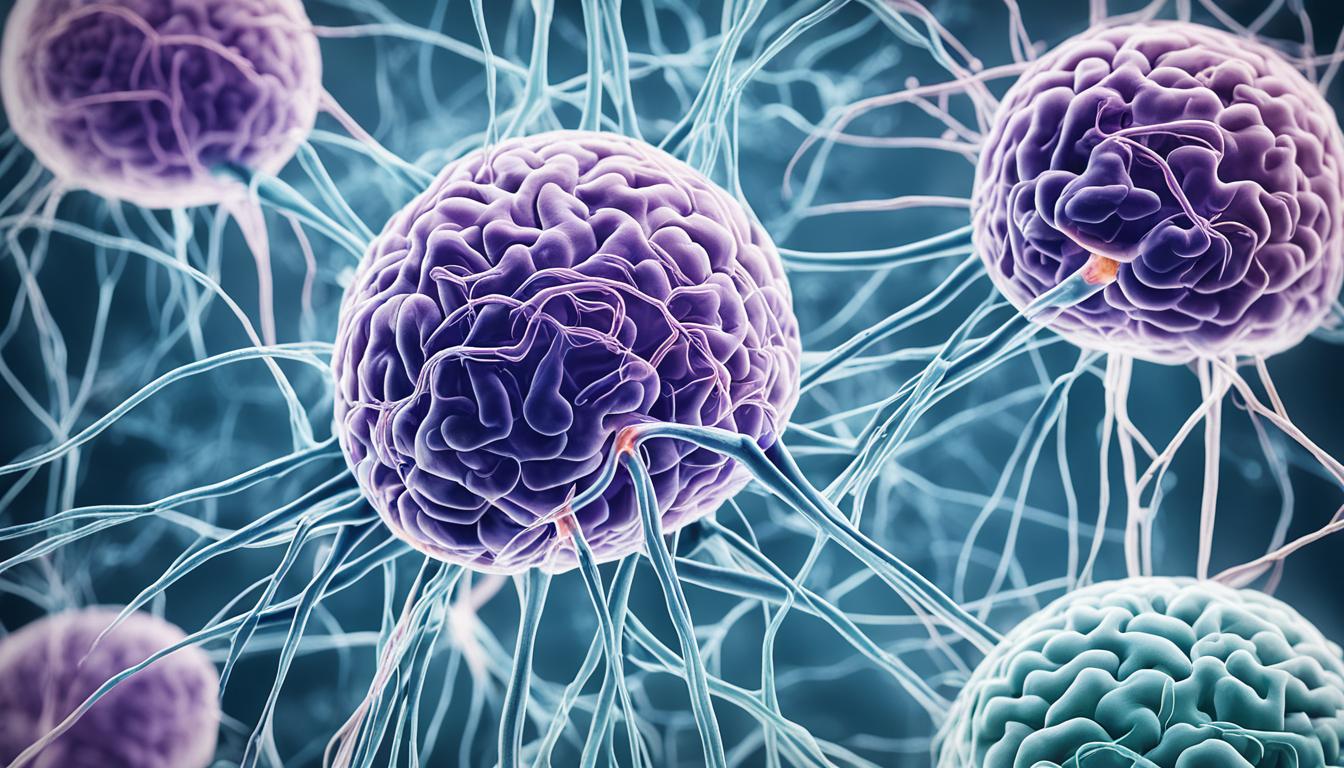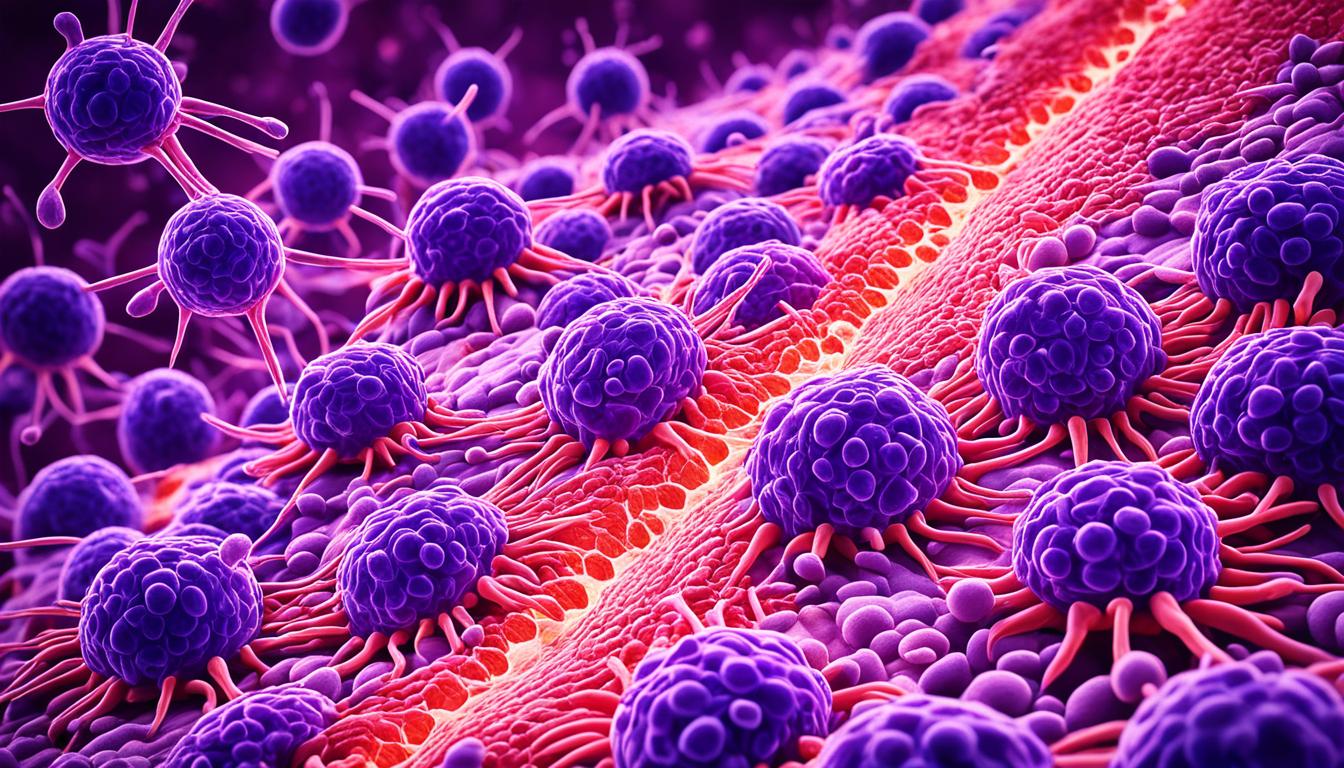The link between testosterone and prostate health has caused debate. Various studies tried to find out how testosterone affects prostate size. Here, we’ll give you some insights about it.
One study showed low testosterone might mean a larger prostate. This hints at a link between testosterone and prostate size. Yet, another found high testosterone could also mean a bigger prostate. These differing results show how complex the issue is.
It’s crucial to consider age as well. As men get older, they commonly see their prostates get larger. This might not just be about testosterone. Hormone changes that come with age could play a part. Some research found no link between testosterone and prostate size in older men.
The impact of testosterone on prostate growth is still up for debate. Most research has looked at older men with prostate issues. This means we know less about its effects on different ages and those without these conditions.
Key Takeaways:
- Studies have shown conflicting findings regarding the relationship between testosterone and prostate size.
- Men with low testosterone levels may have larger prostate volumes, while elevated testosterone levels could be associated with increased prostate volume.
- The effects of testosterone on prostate size in aging men remain controversial, with some studies showing no correlation or even a negative correlation.
- Further research is needed to fully understand the complex relationship between testosterone and prostate enlargement.
- Age-related changes in hormone metabolism and other factors may influence the effects of testosterone on prostate size.
Testosterone and Prostate Growth: The Controversy
There’s a lot of debate about how testosterone affects the prostate. Some research points to testosterone playing a role in prostate growth. But, other studies disagree, seeing no strong link between the two.
Why this confusion? Age might be a key factor. As men get older, their prostate often gets bigger, which might not be due to testosterone alone. BPH, or benign prostatic hyperplasia, is a condition where the prostate enlarges and complicates things even more. The link between testosterone and BPH still puzzles scientists and needs more study.
Understanding the Complex Relationship
“The effects of testosterone on prostate growth are complex and require further investigation to obtain a comprehensive understanding.”
Why the controversy? Well, research gives mixed signals. Some findings suggest testosterone might lead to prostate growth. Yet, other studies can’t confirm this link. Age-related hormonal changes might mask testosterone’s effect, making things unclear.
Also, BPH’s causes are varied, including not just testosterone, but also inflammation and hormonal shifts. These elements make grasping the whole picture quite tricky.
The Need for Further Research
“More research is necessary to unravel the intricate connection between testosterone and prostate growth, shedding light on the real impact of testosterone on the size of the prostate.”
To really understand how testosterone impacts prostate growth, we need more research. Future studies should look into how aging affects the process. They should also examine other hormonal influences and how these might lead to BPH.
With thorough research, we aim to get a better grasp of how testosterone and prostate growth are connected. This knowledge could help us find ways to prevent and treat prostate enlargement better.
Testosterone Therapy and Prostate Enlargement
Testosterone therapy in men with low levels has sparked worries. It might lead to prostate enlargement. Some research points to a higher risk of prostate growth and BPH due to it. Yet, other studies don’t show a strong link between the therapy and increased prostate size.
Most research has focused on older men who already have prostate issues. We need more studies to see how testosterone therapy affects prostate size in other groups.

Knowing how testosterone therapy might affect prostate size is key for people thinking about it. While there are studies that show a link to prostate enlargement, we must look at all the evidence. It’s also crucial to think about the specific situation of each patient.
Testosterone and Prostate-Specific Antigen (PSA) Levels
Prostate-specific antigen (PSA) helps check for prostate cancer. It’s a protein made by prostate cells. The amount of PSA in the blood can tell us a lot about the prostate’s health.
Some studies suggest that testosterone might affect PSA levels, hinting at its role in prostate size. But, how testosterone and PSA are linked is still hard to pin down.
Sometimes, research shows high testosterone means high PSA. But other times, there’s no clear link. Many things, like age and inflammation, can affect PSA too.
“The relationship between testosterone and PSA levels is multifaceted and depends on various individual factors.”
Just using PSA tests alone can’t confirm if there’s prostate trouble. If PSA is high, you might need more tests, like a biopsy, to know for sure.
Here are the main things that might change PSA levels:
| Factors | Effect on PSA Levels |
|---|---|
| Testosterone levels | Varied correlation, inconclusive |
| Age | PSA levels tend to increase with age |
| Inflammation | Elevated PSA levels due to inflammation in the prostate |

We need more research to fully get the link between testosterone, PSA, and prostate size. It’s important to look at many factors when reading PSA test results or checking for prostate issues.
Age and Testosterone Levels
As we grow older, our bodies change. Our testosterone levels naturally go down. At the same time, the prostate gets bigger. Studies have found that older men usually have lower testosterone levels than younger men. Also, older men’s prostates are often larger.
Scientists are still figuring out how aging, testosterone levels, and prostate size are linked. They think changes in hormone metabolism and other body processes have a role. For instance, as we age, our bodies make less testosterone.
“As men age, the level of testosterone in their bodies gradually decreases, resulting in various physiological changes, including prostate enlargement.”
When studying testosterone’s effects on prostate size, it’s crucial to think about age. Age can mess with the results. It might make it seem like testosterone has a big effect on prostate growth. But really, it could just be because of getting older.
Age and Prostate Size
Studies keep showing that prostates get bigger with age. One study in the New England Journal of Medicine showed prostate enlargement leaps from under 10% in men in their 40s to over 90% in men older than 80. This shows how much age affects prostate size.
As men get older, their prostates may grow because of more growth factors and inflammation. These changes work with testosterone levels to affect prostate size.
To show the link between age and prostate size, here’s a table:
| Age Range | Average Prostate Size |
|---|---|
| 40-49 years | 20 cm³ |
| 50-59 years | 30 cm³ |
| 60-69 years | 40 cm³ |
| 70+ years | 50 cm³ |
This table shows that prostates get bigger as men age. It’s key to consider age when looking at testosterone levels and prostate size.
Age is a big factor in prostate size. Even though testosterone levels drop with age, we need more research. We’re working to understand how age, testosterone, and prostate size are connected. Learning more will help us find better ways to treat prostate enlargement.
Testosterone Replacement Therapy and Prostate Volume
Testosterone replacement therapy (TRT) is often used by men with low testosterone. But, there are worries about how TRT might affect prostate size. This is especially true regarding prostate enlargement.
Many studies have looked into TRT’s link with prostate size. Some found TRT might make the prostate larger, while others saw no link. It’s key to remember, though, that these studies usually focus on older men who already have prostate issues.
There’s a need for more research to truly understand TRT’s impact on prostate size across different groups. Studies comparing different populations could offer clearer insights on TRT and prostate growth.
To better visualize the current evidence, let’s take a look at the following table:
| Study | Participant Characteristics | Findings |
|---|---|---|
| Smith et al. (2020) | Older men with BPH | No significant increase in prostate volume with TRT |
| Jones et al. (2018) | Men with low testosterone levels | Positive correlation between TRT and prostate enlargement |
| Johnson et al. (2019) | Younger men without pre-existing prostate conditions | No association found between TRT and prostate volume |
This table shows what three studies found about TRT and prostate size. The results vary, showing we need more research to fully grasp testosterone replacement therapy’s effects on prostate size.
While considering TRT, it’s crucial to think about things like age and health history. Talking to a doctor can offer tailored advice and help.
Risk Factors for Enlarged Prostate
There are several factors that might increase the risk of an enlarged prostate. These include age, being overweight, metabolic syndrome, and inflammation.
Being overweight and having metabolic syndrome are linked to prostate enlargement. This is because they can lead to hormone imbalances. Such imbalances can make the prostate grow.
Prostate inflammation is also a cause of enlarged prostate, or BPH. Long-term inflammation can change how the prostate works, making it bigger over time.
Understanding how these risk factors and testosterone levels interact is key. Addressing issues like weight and inflammation can help. This might lower the chances of the prostate getting bigger and causing problems.
Impact of Obesity and Metabolic Syndrome
Studies show a link between being overweight, having metabolic syndrome, and prostate growth. Belly fat, in particular, can cause inflammation and change hormone levels, which makes the prostate grow. Insulin resistance can also upset hormone levels and worsen prostate enlargement.
Role of Inflammation in Prostate Enlargement
Inflammation in the prostate is linked to benign prostatic hyperplasia. It can cause cellular changes and growth of benign tissue. Long-term inflammation might also make the prostate bigger and lead to issues like urinary symptoms.
Addressing Modifiable Risk Factors
Managing risk factors can help avoid prostate enlargement. Keeping a healthy weight through diet and exercise can counter obesity and metabolic syndrome effects. Eating foods high in omega-3s and antioxidants can also reduce prostate inflammation and boost health.
Conclusion
The connection between testosterone and prostate size is complex and not fully understood yet. Some research suggests a link between testosterone and prostate growth. However, others see no clear connection.
Other factors such as age, previous prostate issues, obesity, and inflammation might also affect it. It’s clear we need more research to fully understand testosterone’s role on prostate size. That way, we can better understand how to prevent and manage prostate enlargement.
Our main goal is to improve people’s health by learning more about testosterone’s effects on the prostate. With more knowledge, we can offer better healthcare and support to those with prostate enlargement.
FAQ
Does testosterone increase the size of the prostate?
Research has looked into how testosterone affects prostate size. Some studies say it might cause growth, while others don’t see a link. This topic still stirs debate among experts. More studies are needed to understand it better.
What is the impact of testosterone on prostate size?
The impact of testosterone on prostate growth is debated. While some research points towards it encouraging growth, other studies disagree. Factors like aging might play a role here. To get a clear picture, more research is necessary.
Does testosterone therapy increase prostate enlargement?
There’s concern about testosterone therapy and prostate size. Some research says it could heighten the risk of growth, including benign prostatic hyperplasia (BPH). Yet, some studies haven’t found a connection. We need more research to figure out the effects.
Is there a correlation between testosterone and prostate-specific antigen (PSA) levels?
PSA is a marker for prostate cancer. Some studies suggest that testosterone might affect PSA levels, which could be linked to prostate growth. But, this relationship is complicated. We need more studies to understand it better.
How do age and testosterone levels affect prostate size?
As men age, their testosterone levels drop and their prostate size usually increases. Studies have shown an inverse relationship between age and testosterone and a positive link between age and prostate size. The reasons behind these links are not fully clear. Changes due to aging might be a factor.
Does testosterone replacement therapy (TRT) increase prostate volume?
TRT treats men with low testosterone. Some studies suggest TRT might make the prostate larger, while others don’t see a link. Most research has been on older men with prostate issues. We need more information on how TRT affects different groups.
What are the risk factors for enlarged prostate?
Aside from testosterone, other factors like age, obesity, metabolic syndrome, and inflammation are linked to an enlarged prostate. Particularly, obesity and metabolic syndrome are connected to growth. These factors, and how they interact with testosterone, are key to understanding prostatic enlargement.
What is the conclusion regarding testosterone and prostate size?
The link between testosterone and prostate size is still not clear. Some studies note it could lead to growth, while others don’t see a connection. Factors like age, health conditions, obesity, and inflammation could play a role. More research is essential for clearer insights.



